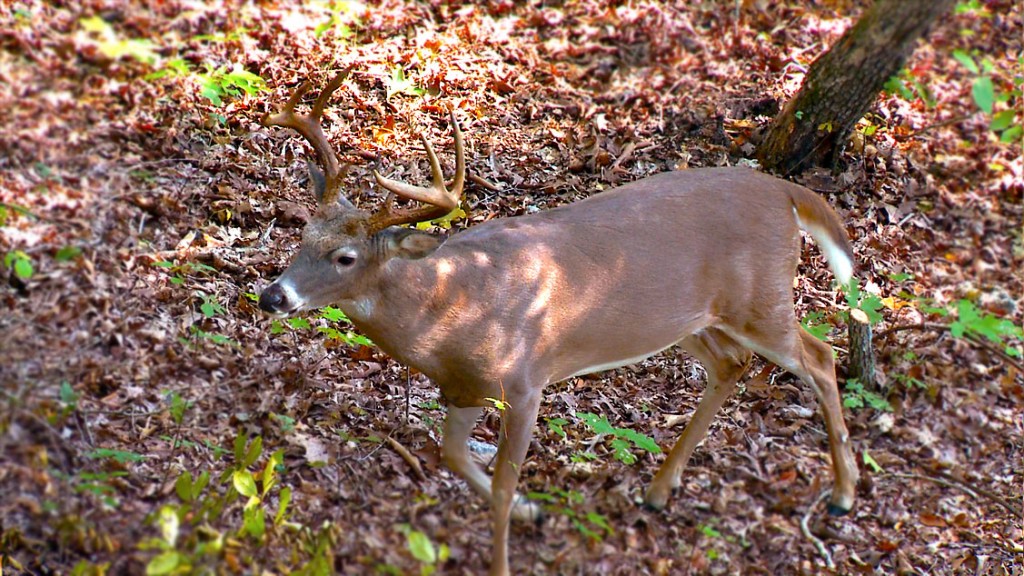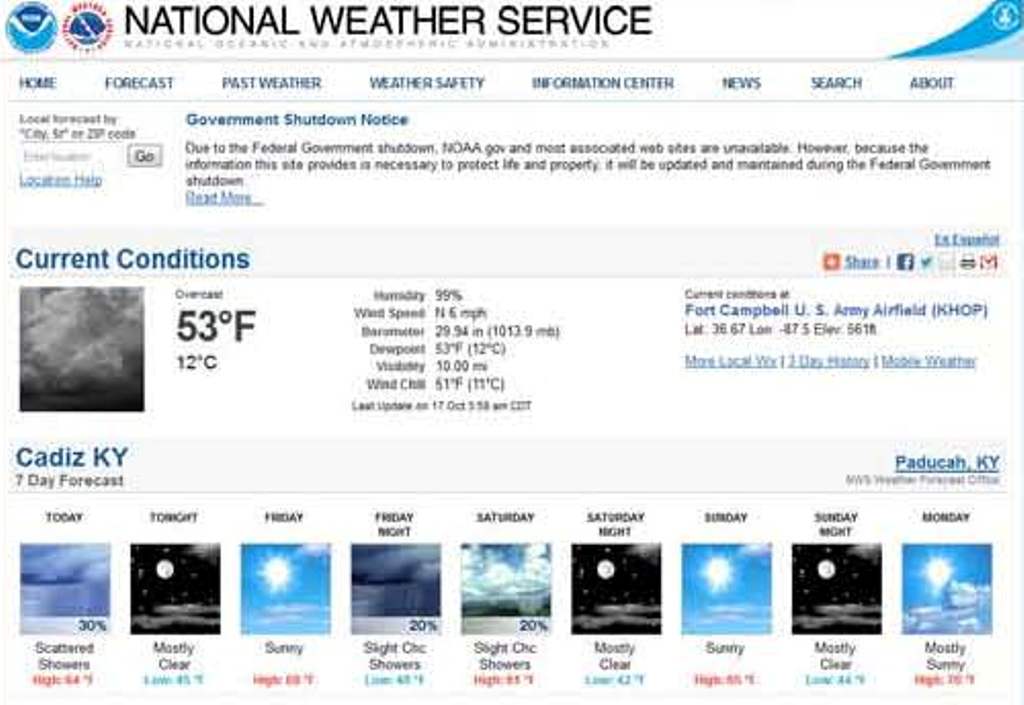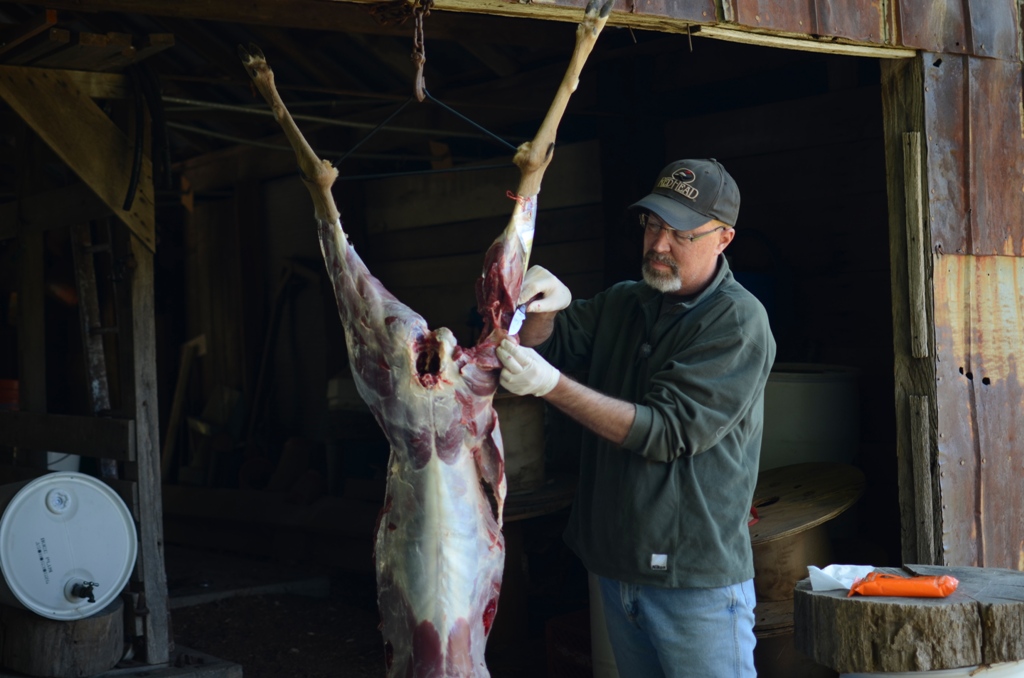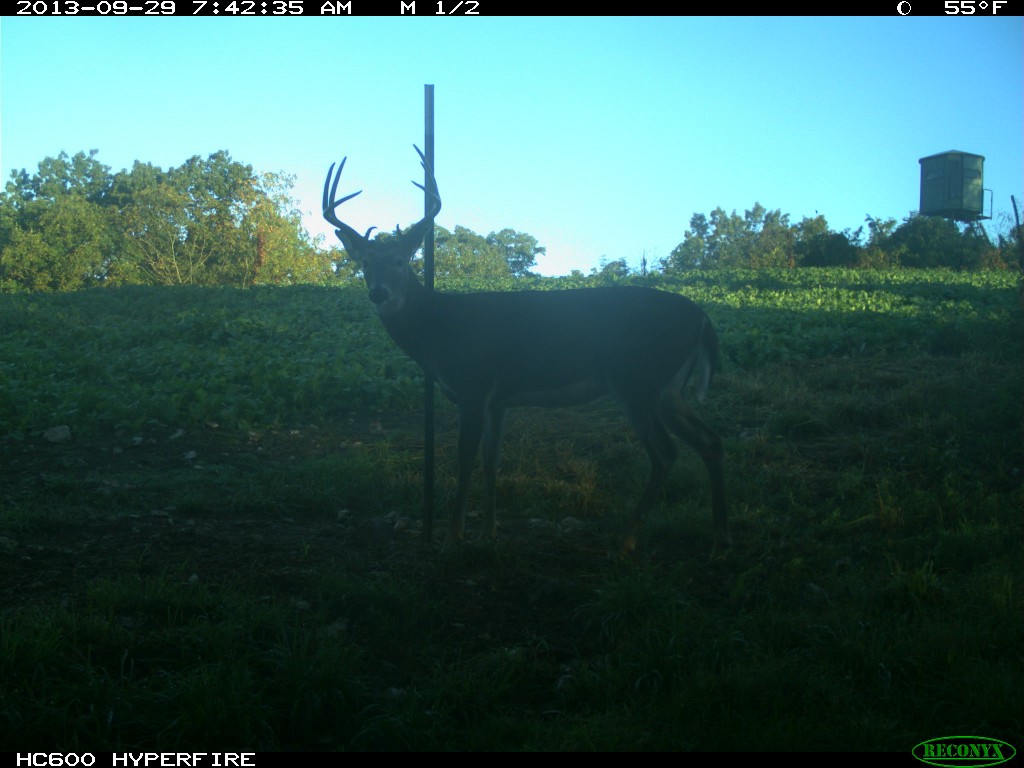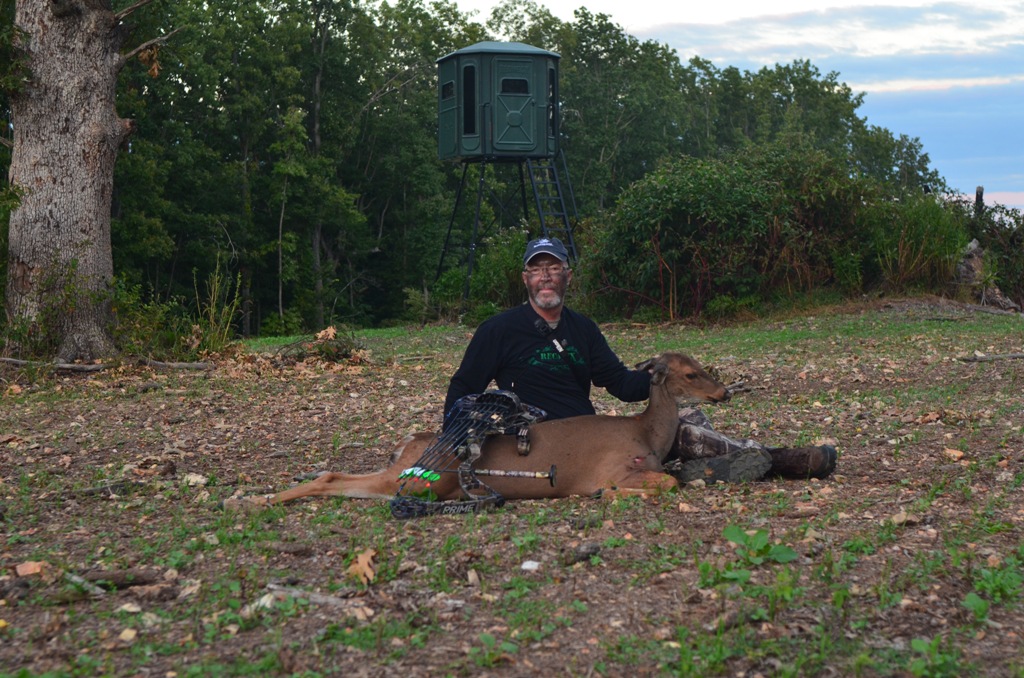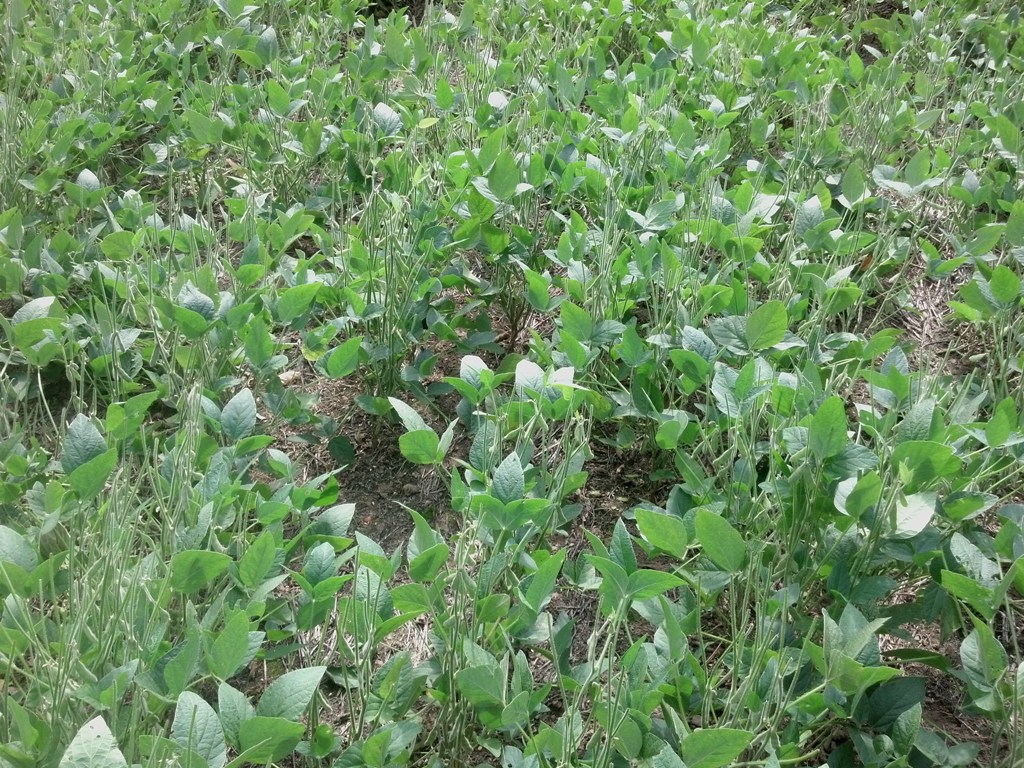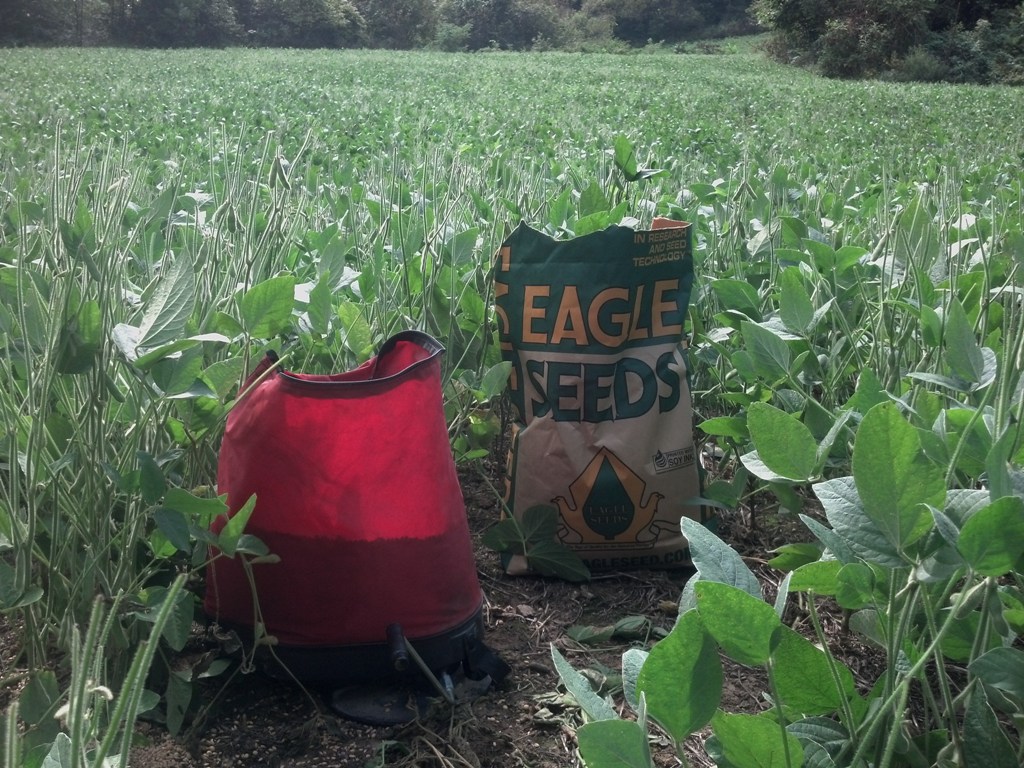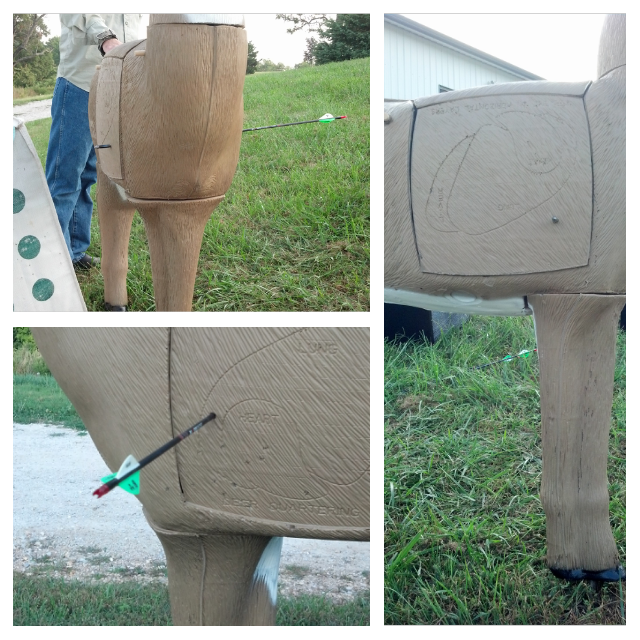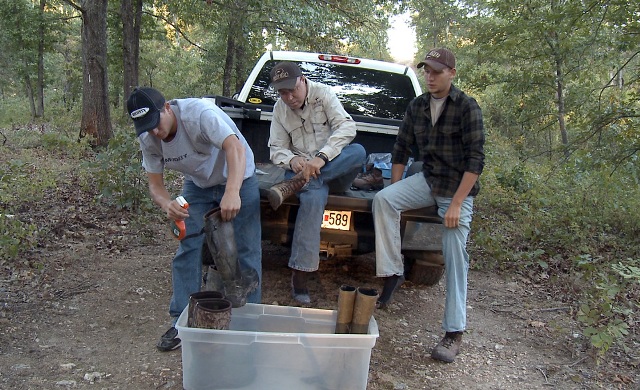Category: Hunting Blog
The Rut Switch
I’ve heard from hunters throughout most of the whitetail’s range this week and most of them are asking “When will the rut start?”
The rut doesn’t simply “start.” There will be a few does that become receptive then more and more will become receptive. Almost all bucks sense the coming surge of does becoming receptive, probably through pheromones deposited by does at scrapes and simply throughout does daily activities.
Bucks become aggressive toward other bucks and tend to spend a bit more time checking areas where does are or have been before most does are receptive. However, this heightened buck activity can occur mostly during the hours of darkness.
This is because fear/survival is still the primary motivation for mature bucks. It’s not until bucks are pursuing a receptive doe or several does in the area are receptive and bucks are aggressively seeking a receptive doe (the area is full of the pheromones produced by receptive does) that bucks become less cautious and tend to alter the time and locations of their activity patterns that makes them more visible than other times throughout the year.
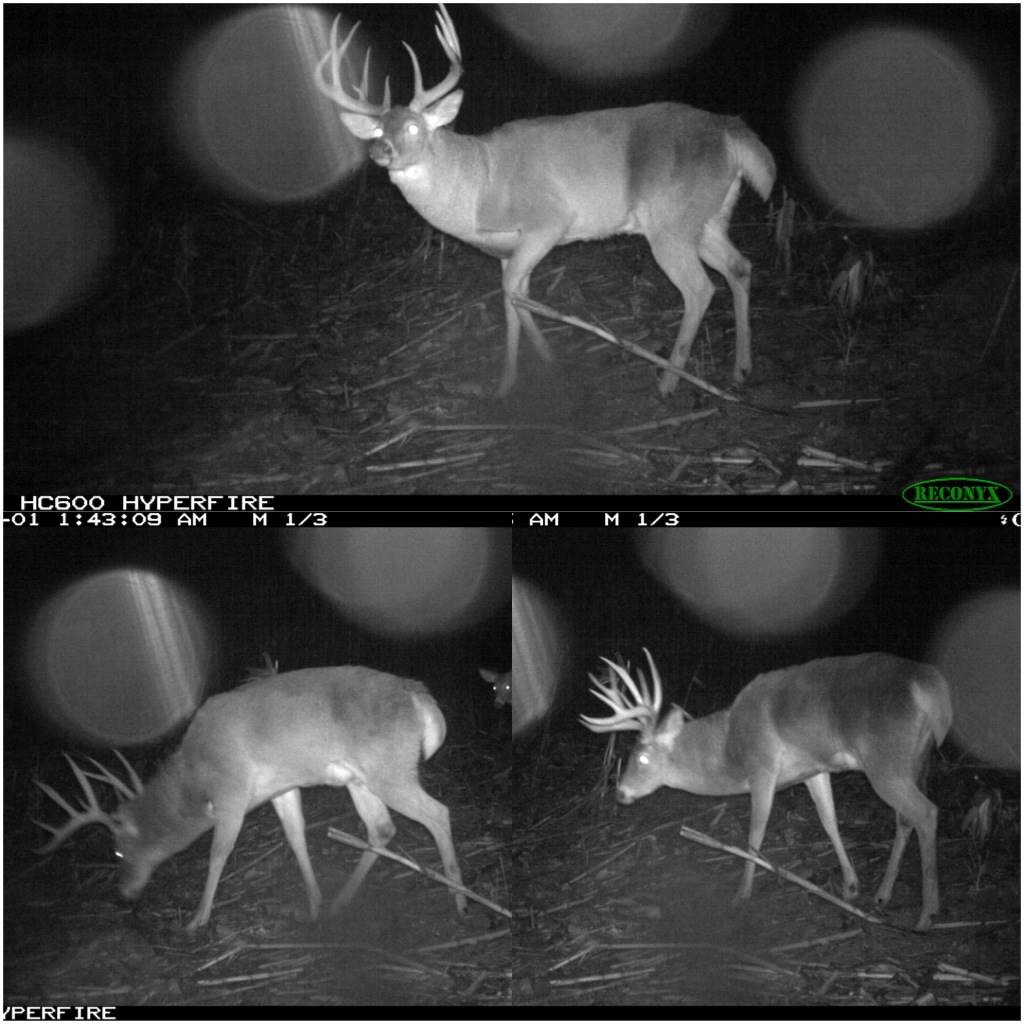
Heightened buck activity can occur mostly during the hours of darkness because fear/survival is still their primary motivation.
This change of focusing primarily on survival and moving primarily at night to aggressively seeking does throughout the day can occur within a few days. This is especially true if the adult sex ratio is close to being balanced (1 adult buck to 1 adult doe).
Usually the tighter the adult sex ratio (even to the point of being skewed toward bucks) the earlier during the year increased daytime activity of bucks will occur and the more intense the rutting action. This simply appears to be due to increased competition for does.
I’ve hunted herds with an adult sex ratio skewed toward does (true for most whitetail herds due to over harvest of immature bucks and lack of doe harvest) and herds that were managed for a balanced or even skewed toward bucks adult sex ratio. There’s no comparison of the pre rut and rut action experienced by hunters between the two differently managed herds.
Hunters that have worked to achieve a balanced adult sex ratio (they’ve passed immature bucks and harvested ample does) are rewarded with the opportunity to experience intense rutting action and herds that respond well to calls, decoys, etc.
This hunting season don’t simply wish you could experience hunts like you watch on hunting shows. Consider the adult sex ratio where you hunt and if it’s skewed toward does, do your part and bring home some tenderloin from a doe and pass those immature bucks that seem to always offer a shot. You’ll be amazed at how good the hunting can be anywhere in the whitetails’ range if the herd is managed properly.
Growing and hunting deer together,
Grant
Using Scrapes To Determine The Stage Of The Rut
There are lots of scrapes being worked at my place this week! The same is true throughout most of the whitetail’s range. Kable, a GrowingDeer.tv Pro Staff member that hunts in Southern Indiana, shared these Reconyx images. This three year old buck aggressively worked this scrape October 28th at the property where Kable hunts.
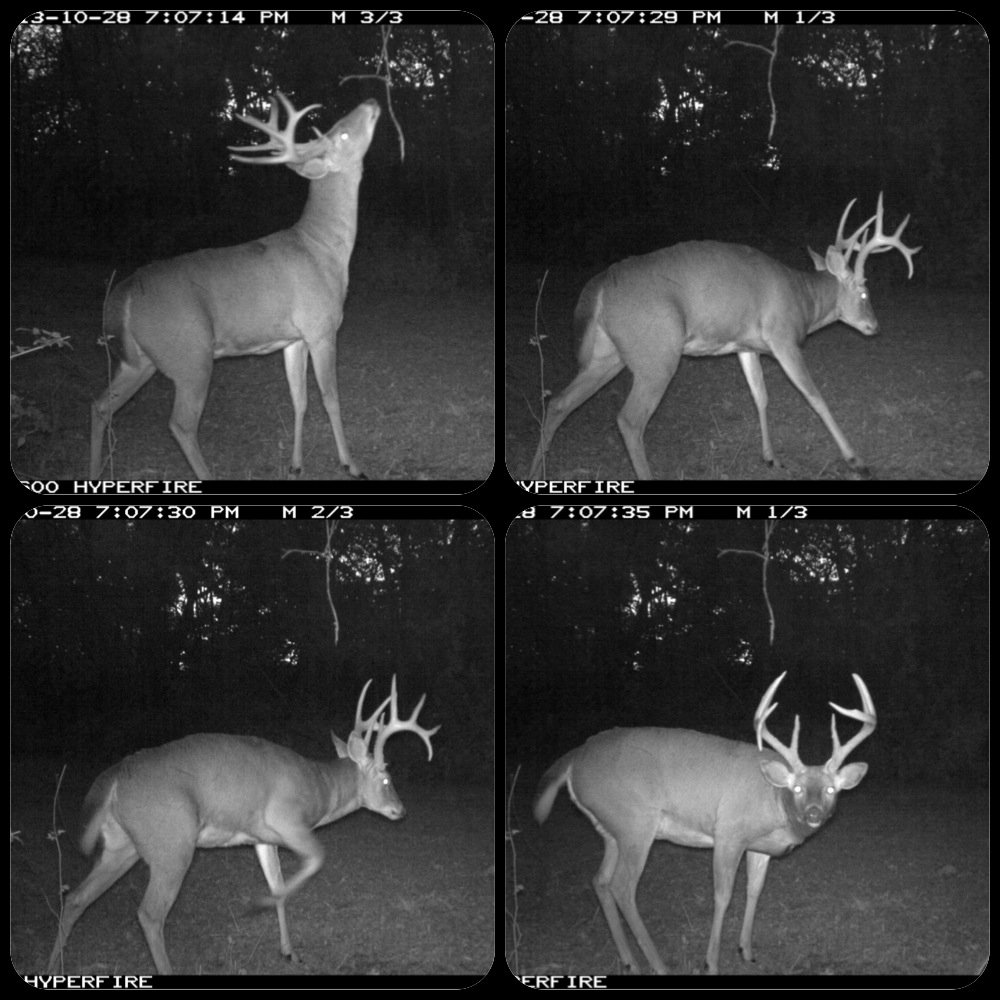
Scrapes are a great indicator of the stage of the rut and provide information I use when selecting stand locations.
Scrapes are like the old phone booths in that they serve as communication posts for the deer herd. They are not territorial markers. Deer use scrapes to communicate who’s in the neighborhood along with their status and/or to check the status of other deer in the area.
Deer use scrapes the most just before most does become receptive to bucks. Once that occurs, bucks aren’t worried about status and does don’t need to go to a scrape as they are producing enough scent to communicate their status wherever they are.
So, once you see scrapes being actively used, you know the pre-rut is rolling and bucks will likely be more active during daylight hours unless the daytime temperatures are way above normal. That stage will last about two weeks and then most of the scrapes won’t be visited as much. In fact, you’ll notice leaves covering most of the scrapes. That’s because enough of the does are receptive that bucks leave the scrapes to find those very attractive does.
So, how can deer hunters use this information to hunt more effectively? I use this information to select stand locations. If most of the scrapes are being kept open and especially if I have trail camera images of a mature buck using a scrape, I’ll hunt near that scrape. If most scrapes have been open and actively used for more than a week or so, I’ll switch to hunting travel corridors or close to bedding areas where I expect bucks to be cruising in search of receptive does.
Remember, scrapes are much more than potential hunting locations. They are a great indicator of the stage of the rut. If most scrapes were active a week ago that tells me just as much about where I should be hunting as when most scrapes are active. The next time you are in the woods, pay attention to the condition of the scrapes and use that information the next time you select the stand location.
Growing and hunting deer together,
Grant
Plans for Hunting The Rut!
With the oncoming of the rut drawing closer every day the GrowingDeer Team has been out hunting hard since the middle of October. We’ve found ourselves perched 20 plus feet up a tree in hopes of an encounter with a hit list buck out trolling trying to find that first hot doe of the year!
Almost every hunter has their game plan on how they’re going to capture that hit list buck, and like most, we know that it’s going to bust wide open soon! Until then, we need to have a plan to be successful. Over the last couple weeks we’ve observed younger bucks following does, we’ve seen them sparring, and we’ve seen them scraping, but we haven’t seen anything that’s made us believe they’re getting over-heated doing their pre-rut ritual. Through all our observations, encounters, and Reconyx data we know food sources are still the main attraction. The food sources include a ridge littered with acorns from white oaks and in areas without many acorns we’re watching food plots. In those feeding areas where the deer have been most active we’ve noticed that is where the scrapes and rubs are being most frequented. We learned this the hard way, perched in a Muddy stand before daylight and not seeing a deer until 10:30.
We’re now trying to find that magical place where the wind is steady, there are still acorns falling and the deer are active during daylight. If we can find the food source that the females are using the bucks will be along shortly! That’s our plan! Be sure to keep up with GrowingDeer.tv every week to see if the plan works!
Daydreaming of Whitetails,
Adam
Tips For Deer Hunting During The Pre-Rut Phase
I’m sitting at my friend’s place in Kentucky. It’s raining. I really dislike driving seven hours to sit inside and write rather than being outside and hunting. However all is not lost as it’s the pre rut! The pre rut is a time when bucks are pumped full of testosterone but most does are not receptive yet. Therefore bucks tend to move a lot seeking one of the few does that are receptive. In simple terms, bucks are more likely to be active during daylight hours during the pre rut.
Pre rut action is often substantially elevated when a cold front occurs. This is especially true if the cold front occurs during the first part of the pre rut as there are fewer does receptive and the bucks are searching throughout their entire range.
A cold front often follows rains this time of year. So, while I missed hunting this morning the action may be great this afternoon and tomorrow! Bucks should be moving as the temperatures are forecast to drop throughout the day and tomorrow!
Bucks often will tend scrapes just after a rain during the pre rut. In fact, the pre rut is the best time of year to hunt near scrapes. So, I’ve selected a stand location this afternoon in a strip of hardwoods that connects to larger sections of woods. There are scrapes along this strip of hardwoods and I can approach with the wind in my face. I can approach, hunt, and leave without alerting deer using this travel corridor.
Cold fronts during the Pre Rut often result in increased buck activity. Selecting stands that can be approached without alerting bucks while approaching, hunting, and leaving the stand will increase your chances of tagging a mature buck.
The rain should let up soon and I’m about ready to head to the stand. I hope you have an opportunity to get out and enjoy Creation during the Pre Rut.
Growing Deer together,
Grant
Deer Hunting Benefits: Healthy Meat
I really enjoy antlers. I think this is natural. The number of antlers painted on caves, cliffs, etc., around the world seems to support that man has always enjoyed antlers!
It’s important to remember that the meat and not the antlers is what sustained those folks that drew antlers on the caves and cliffs 1,000’s of years ago. My family consumes 10+ deer a year – mainly does. My entire family helps in the process of obtaining and preparing venison. Both of my daughters, Raleigh and Rae (ages 14 and 11) hunt. Tracy, my wife, helps process the venison.
We skin, debone, trim off all connective tissue, remove lymph nodes, etc., and then use a vacuum sealer to package the meat before placing it in the freezer.
IF you have any doubt about the quality of venison, the Mayo Clinic says…
“In general, wild game is leaner than domesticated animals, because animals in the wild are typically more active. In comparison to lean cuts of beef and pork, game meat has about one-third fewer calories (game birds have about half the calories) and quite a bit less saturated and total fat. Cholesterol for wild and domestic meat ranges from 50 to 75 milligrams for a 3-ounce serving — with wild game tending to be in the lower end of the range.”
I enjoy improving the habitat on my farm and helping others improve their wildlife habitat and hunting by sharing tips and techniques on GrowingDeer.tv. I really enjoy antlers and managing to allow bucks to live to maturity and express most of their antler growth potential.
Even during prime hunting I rarely pass a doe unless there’s plenty of venison in our freezer as the real reason I hunt is to provide for my family while enjoying and partaking in Creation through an activity that’s as old as the drawings on caves and cliffs around the world.
What’s in your freezer?
Growing Deer together,
Grant
Deer Hunting: Estimating A Buck’s Age
I’ve received tons of requests to estimate the age of bucks on the GrowingDeer.tv Facebook page recently. It seems one of the toughest bucks to accurately estimate the age of is a 3 ½ year old. On most properties a 3 ½ year old buck appears more mature than most bucks. There will always be some natural mortality– so there will usually be fewer 3 year olds than bucks that are 1 ½ or 2 ½. The shoulders of three year old bucks often appear much more developed than younger bucks.
Another complicating factor is that typically 3 ½ year old bucks have expressed approximately 75% of their antler growth potential. So they are carrying a nice rack! All the above factors make it easy to overestimate the age of 3 ½ year old bucks.
When evaluating a camera survey or – even more importantly – when making a shoot or don’t shoot decision while hunting (Watch GDTV #103), I try to focus on body characteristics and not the antlers. I look to see if the buck’s back is straight or bowed (like an old saddle horse). A straight back is an indication that the buck is 3 ½ years old or younger. Likewise I look at his belly. A flat, tight belly is another sign the buck is 3 ½ or younger.
Bucks that are 4 years old or older often have a distinct hump over their shoulders. Three year old bucks can look like they have a hump over their shoulder in some postures – but 4 year old and older bucks almost always appear to have a hump over their shoulders in all postures.
Finally, I imagine placing a 2” x 4” tucked tight right behind their front legs and under their chest. Think of this as a balance rod. If the buck obviously tilts toward his rear, he’s most likely 2 years old or younger. If he balances on the 2” x 4” he’s probably 3 ½ years old. If the buck has the shape of a buffalo and would tip toward his head he’s most likely 4 years old or older.
The 2” x 4” technique of aging deer on the hoof has worked very well for me. I hope you have an opportunity to try it from a stand soon!
Growing Deer together,
Grant
Bow Hunting Whitetails: How To Select The Best Broadhead
Bow season is open or opens very soon in most states. Many hunters have been planting food plots, scouting, practicing with their bows, etc. During all this activity and excitement, don’t forget the point (pun intended) that determines if all this activity results in fresh tenderloins or tag soup! I’m referring to broadheads!
Broadheads kill deer by causing rapid blood loss. The more rapid the blood loss, the shorter the trail. Most reviewers of broadheads seem to focus on the amount of cutting surface and how straight it flies. These are certainly important characteristics. Another characteristic that’s very important to obtaining venison is the sharpness of the broadhead! I wrote about that a few weeks ago in a post titled Why Every Hunter Should Want The Sharpest Broadhead.
Sharp broadheads are very important! However, sharp is only good if the broadhead is strong enough to stay together as it passes through the critter. A deer’s vitals are protected by ribs and a shoulder bone. Rarely do deer present a perfect broadside shot so it’s often likely that a broadhead will enter through the ribs and need to exit through the shoulder bone.
This requires a very strong broadhead to retain its shape and function as designed. I tend to always hug the shoulder tightly with my aiming point. If the deer is quartering away from me at all such an aiming point will result in an exit through the shoulder bone.
I shot a doe that was quartering away at a steeper angle than I thought yesterday afternoon and the G5 Striker head made a perfect triangle hole in the off shoulder bone. The trail was easy to follow and there was fresh venison laying less than 100 yards from the Redneck Blind where I was hunting.
I hope to make the perfect shot each time. That’s not realistic. That’s why I suggest all hunters use a very sharp broadhead that is strong enough to penetrate bone and result in a good blood trail.
Growing and hunting deer together,
Grant
Sweetening the Plot!
There is an 80% chance of rain for Friday so I did one of my favorite activities this morning!  I broadcast some Broadside fall food plot blend into existing soybean plots. In a couple of the smaller food plots here at The Proving Grounds the deer have browsed the soybeans so aggressively that 30-50% of the soil is exposed to the sun. Deer are still using these food plots so there’s probably 2,000+ pounds of quality forage in these plots per acre.
I broadcast some Broadside fall food plot blend into existing soybean plots. In a couple of the smaller food plots here at The Proving Grounds the deer have browsed the soybeans so aggressively that 30-50% of the soil is exposed to the sun. Deer are still using these food plots so there’s probably 2,000+ pounds of quality forage in these plots per acre.
I don’t want to destroy the existing soybeans. They are attracting and benefiting the deer. In fact, I may hunt over one of these plots soon. However, the soybeans in these plots won’t make enough pods to feed deer during the late winter. Therefore the table in these locations will be cleaned and deer will feel unwelcome and probably go somewhere else to eat (maybe other properties).
Rather than clean the table, I simply start serving the next meal. I walked through the plots and broadcast the Broadside blend with a hand operated spreader. The wheat, brassicas, and radishes will germinate rapidly if it rains as forecast. The special soybeans in the blend are bred to germinate and grow quickly. These beans won’t survive after the first hard frost, but are an incredible tasty appetizer to keep the deer feeding in this plot until the radishes, wheat, and brassicas are large enough.
This plan keeps the deer foraging in the plot without interruption and provides quality nutrition until spring when I’ll plant Eagle Seed forage soybeans again.
There’s another advantage that food plot farmers rarely talk about. Keeping forage growing year round drastically reduces erosion and nutrient losses to leaching (fertilizer leaching too deep in the soil for plants to use). Radishes and turnips are very good at “mining” nutrients. That is to say they capture nutrients in the deep roots and bring them back to the surface. Either deer consume the nutrients (the purpose of the plot) or the big bulbs rot and provide them at the surface for the next crop.
This is the system that kept the great prairies extremely fertile for centuries! It’s an inexpensive and natural way to provide quality forage for deer at your proving grounds.
Growing and hunting deer together.
Grant
Deer Hunting: Realistic Practice Puts Tenderloins In The Freezer
I enjoy shooting both guns and bows! I was raised by a family that shot competitively. My father, mother, and both sisters and I have won numerous shooting matches in the National Muzzleloader Rifle Association’s competitions. I give all the credit for the wins to my father, Glen Woods.
My dad always had us practice in the same positions, at the same ranges, and at the targets we’d see at the upcoming matches. He’d also mix in some fun, like shooting at novelty targets.
The skills I learned as a child while being “coached” by my father have helped me through the years. However, just the knowledge of how to shoot won’t put many tenderloins in the freezer without continual practice.
I believe it is just as important for hunters to practice shot placement as it was for me as a competitor to practice with the exact conditions I would see during matches! A great method to do this is to practice using 3D targets! It’s very easy to focus on where the arrow/bullet strikes the target, especially paper targets. To consistently bring home tenderloin, knowing where the arrow/bullet exits is as important as the entrance.
To take this a step further, I like to practice with the broadheads and bullets I use to hunt with. Finally, I like to simulate the conditions of shooting at a critter versus practicing quietly by myself. I often have my buddies shoot with me and encourage them to be talking, teasing, etc., while I’m shooting.
Finally, I continue practicing during season. It’s easy to practice all summer and be shooting great at the first of the season. However, it’s easy to spend all of our free time hunting once season begins. As the temperatures change most hunters will wear different/more clothes. This can radically change the sight picture of shooting a bow and/or gun. In addition, muscle tone developed by frequently practicing with a bow can decrease substantially in a few weeks if the practice frequency or duration decreases.
I’ve been practicing with my hunting gear, and will continue practicing throughout the season. How about you?
Growing and hunting deer together,
Grant
Using Trail Cameras: Where Are The Mature Bucks?
I often share about using game cameras to find and pattern mature bucks. This usually results in questions posted on my Facebook page from frustrated hunters that have tried the same technique and failed. They state they know there are mature bucks where they hunt but seldom get pictures of them on their cameras.
There are several likely reasons this occurs. It could be as simple as they are using poorly built game cameras that make too much noise when taking a picture and/or have such a slow shutter speed that mature/alert deer have moved out of the camera’s view before it takes a picture.
I use Trophy Rocks to bring deer in front of my cameras. I use Reconyx cameras as they’ve been shown time and time again to have a faster trigger speed, if not the fastest, of any game camera on the market. They are also extremely quiet when operating. I learned years ago it was better to pay more for a good quality game camera and have one that will work properly for years versus buying a less expensive camera and having to replace it frequently and get low quality pictures and alerting mature bucks.
Even if your equipment is working well, there’s still another factor that impacts the success or failure of locating and patterning bucks with trail cameras. Most hunters don’t use any scent control when checking trail cameras. The same hunters wouldn’t think about hunting a stand without checking the wind and/or using some process to reduce their odor.
I prefer to wear clean boots and treat them with Dead Down Field Spray before going to a camera site. It’s easy to grab a trail camera with sweaty hands and pull the card/check the batteries. However, doing so simply leaves a substantial predator odor imprint exactly where I don’t want bucks to be alert. That’s why I use Dead Down Wind Field Wash Cloths to remove odor from my hands and the camera.
These simple steps can play a big role in finding and patterning a good buck, and ultimately lead to tagging him! Ignoring these steps can result in alerting mature bucks during the early season and sending them into nocturnal mode before the hunt begins.
Growing and hunting deer together,
Grant



